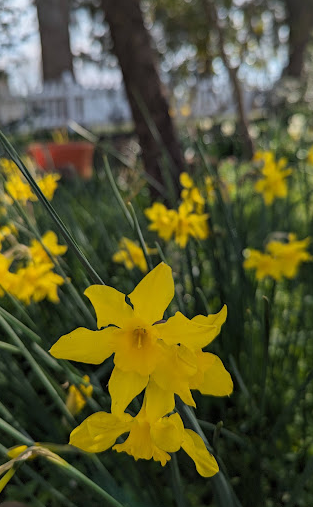Woodland Gingers
- Clifford Brock
- Jan 26, 2022
- 3 min read
If you've ever walked through hardwood forests in the southeast, you've no doubt encountered a wild "ginger". I put ginger in quotes because I want to emphasize that this isn't the ginger that gives Asian dishes its characteristically "spicy" warmth. Rather, what I'm talking about are little woodland plants with tiny ground-level flowers and arrow-shaped leaves. The only "gingery" thing about them is that they have a spicy scent, although I find the smell closer to anise than ginger. And while they have been used in native or traditional medicine, they are considered mildly carcinogenic, so I wouldn't recommend eating them.
Asarum or Hexastylis are incredibly cute living "accessories" for your shady places. They typically exhibit coriaceous, or leathery evergreen leaves with unique blotches or mottling. Some have glossy pure green leaves, some have spots, and some have amorphous markings that remind me of starry nebulae. Each one is unique and individual, which makes them all the more wonderful.

The flowers are just as variable. Some are large, some white, most are brownish-purple or pink. Our ancestors came up with colorful common names like, "pigs at a trough" or "little brown jugs". They are apparently pollinated by tiny fungus gnats or flies. Though I've also heard that tiny beetles or roly-polies are the primary pollinators. The flowers do seem to be eaten by snails and slugs, so I'd advise either getting a bunch of toads or treating for snails in the early spring.

In my garden, I pair woodland gingers with trillium and other spring ephemerals. They make excellent companions for shallow-rooted, water-greedy shrubs like native azaleas because of their drought tolerance. Gingers perform best in medium to lightly shaded spots. Full sun will cause the leaves to bleach and wilt. In the wild clumps are typically small with maybe 4 to 10 leaves, but in our gardens, these plants bulk up quite nicely and can form robust clumps.

Propagation can be difficult for these plants. In the past, when I was more impatient and less experienced, I killed clumps by trying to divide them. I've now learned, mostly from other horticulturists, that the best time to divide them is in winter when the soils are cold, and it is best to dig up the whole clump then gently tease apart the roots, as opposed to "severing" the roots with a soil knife or spade. They seem to succumb to soil pathogens, which invade damaged roots. I must admit, because of my failures, I'm still a little hesitant to divide them. Perhaps I'll try again this winter.

Luckily, most wild gingers are fairly common in our local forests, especially Asarum arifolium. This is probably because they seem less susceptible to predation from deer than other wildflowers, like Trillium. Though I've experienced some deer damage in places where deer populations are high, like in Athens, Ga. Armadillos can also wreak havoc. One year a unique specimen was so badly unearthed by armadillos, I wasn't able to save it. From now on I try to always fortify my vulnerable plants with circles of stones, this does seem to deter the armadillos, at least for now. Just remember to periodically check underneath your stones for slugs.

Finding wild gingers in the trade can be difficult, but not impossible. Plant Delights offers a few named clones every year but expect to pay around $20/ quart. These are typically slow-growing plants, so the price reflects the labor and time. Obviously, there will never be a huge demand for these plants, but I do think they make attractive little clumps for a shade or fairy garden. If you want to see a huge variety of species and forms, check out this link from PDN: https://www.jlbg.org/content/gallery/Asarum_(Wild_Ginger)/




Comments